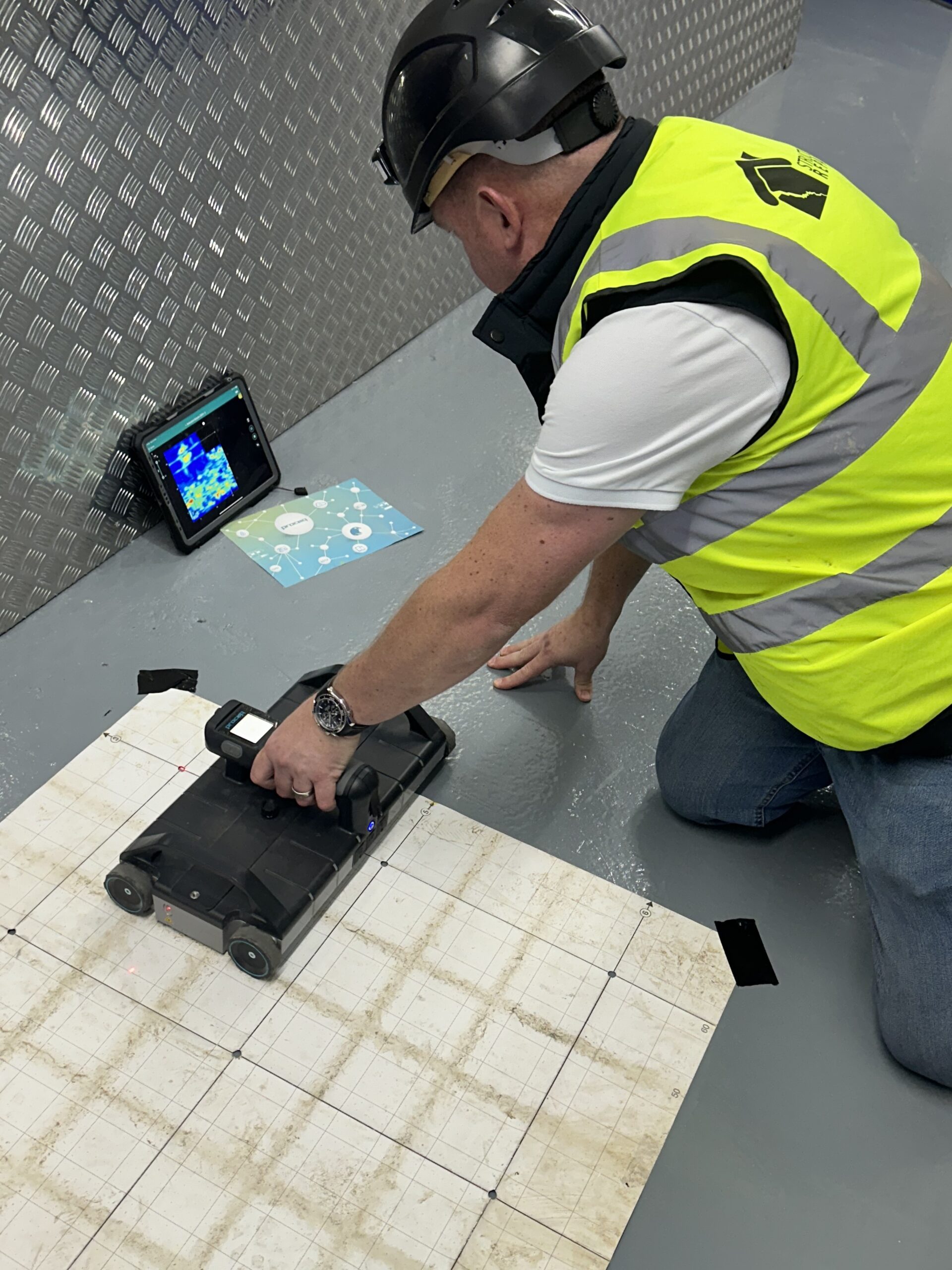Concrete Scanning: Your Guard Versus Unforeseen Obstacles in Construction Projects
In the realm of construction, unexpected challenges can frequently disrupt timelines, budgets, and safety protocols. Nonetheless, with the evolution of concrete scanning technologies, the ability to prepare for and minimize possible challenges has become a critical facet of job planning and execution. By harnessing the power of innovative scanning techniques, building professionals can proactively identify covert threats underneath the surface area, making sure a smoother and extra efficient task distribution. As we check out the importance of concrete scanning as a safety shield versus unanticipated barriers in construction tasks, a much deeper understanding of its applications and advantages arises, clarifying the transformative influence it can have on the sector all at once.
Significance of Concrete Scanning
Concrete scanning plays an essential duty in ensuring the safety and security and stability of building and construction projects. By using innovative technologies such as ground-penetrating radar (GPR) and electromagnetic induction, building and construction groups can accurately find rebar, post-tension wires, conduits, and other prospective blockages within concrete frameworks. This procedure is important for stopping pricey damages, guaranteeing structural security, and keeping task timelines.
Among the primary reasons why concrete scanning is so essential is its capability to alleviate threats throughout the building and construction stage. By recognizing hidden hazards under the surface area, such as voids or shabby areas within the concrete, professionals can proactively attend to these problems prior to they intensify into even more considerable issues. This positive method not only enhances worker safety but also reduces the possibility of construction delays and spending plan overruns.
In addition, concrete scanning makes it possible for building and construction teams to make informed decisions based upon precise data. By having a clear understanding of the subsurface conditions, job supervisors can prepare excavation, boring, or cutting activities much more efficiently, decreasing the potential for unintended damages to crucial structural components. Inevitably, buying concrete scanning services is an aggressive procedure that can save building and construction firms time, cash, and credibility over time.
Advanced Technologies for Discovery

One more innovative innovation is Electromagnetic Induction (EMI), which spots metal and non-metallic items below ground by inducing electro-magnetic areas. Furthermore, Acoustic Pulse Mirror (APE) modern technology makes use of sound waves to evaluate the problem of concrete structures and find fractures, gaps, or delaminations.
Moreover, advancements in infrared thermography have allowed the discovery of moisture infiltration and insulation spaces within concrete frameworks. This modern technology aids in stopping future deterioration and guaranteeing the durability of building and constructions. By incorporating these advanced innovations right into concrete scanning techniques, building and construction projects can reduce dangers and enhance general task end results.
Advantages of Proactive Scanning
Carrying out proactive scanning techniques explanation in building and construction jobs this hyperlink enhances the very early detection of potential subsurface challenges, leading to improved task effectiveness and cost financial savings. By making use of concrete scanning innovations such as ground-penetrating radar (GPR) and electromagnetic induction, building and construction teams can recognize concealed hazards prior to they intensify right into expensive concerns.
By determining possible barriers early on, construction crews can take preventive steps to reduce dangers and guarantee a much safer working atmosphere for all included. Generally, the positive technique to concrete scanning not just saves time and money but also improves the overall quality and success of building and construction tasks.
Enhancing Task Performance
To optimize construction task results, the aggressive scanning techniques used not just boost safety and security however additionally play an important duty in boosting general project efficiency. By performing thorough concrete scanning prior to beginning any type of building and construction tasks, prospective obstacles and threats underneath the surface can be identified and minimized early. This positive approach decreases the likelihood of costly delays, revamp, and crashes, therefore streamlining the task timeline and budget plan.
Enhancing project performance with check my source concrete scanning entails making use of sophisticated modern technologies like Ground Permeating Radar (GPR) and 3D imaging to accurately draw up subsurface features and energies. This detailed details enables building and construction teams to plan their tasks better, preventing encounter existing structures or energies, maximizing resource allowance, and minimizing downtime. Additionally, by preemptively attending to any kind of underground intricacies, the building and construction procedure can continue efficiently, with fewer disruptions and unexpected challenges. Ultimately, the integration of concrete scanning into building jobs not only makes certain safety and conformity yet also improves performance and project efficiency.
Ensuring Safety And Security On-Site
Safety on building and construction websites is paramount to the success of any project. Ensuring safety on-site requires an extensive method that involves proactive steps to avoid mishaps and reduce dangers. One of the key aspects of advertising safety and security is giving appropriate training to all employees associated with the task. Training must cover appropriate handling of equipment, adherence to safety methods, and emergency situation procedures. Regular safety examinations and audits must additionally be carried out to identify potential threats and resolve them quickly.
Carrying out clear communication networks for reporting safety problems is necessary for producing a secure work environment. Motivating a safety-first culture where employees feel equipped to speak up regarding potential dangers can help protect against mishaps prior to they happen. In addition, offering individual protective tools (PPE) and imposing its use is essential in securing workers from injury.
Final Thought

By incorporating these advanced technologies right into concrete scanning methods, construction tasks can reduce risks and boost overall task results.

In verdict, concrete scanning plays a critical duty in building jobs by finding unanticipated challenges that could possibly impede development and compromise safety on-site. GPR Concrete Scanning Bellevue.